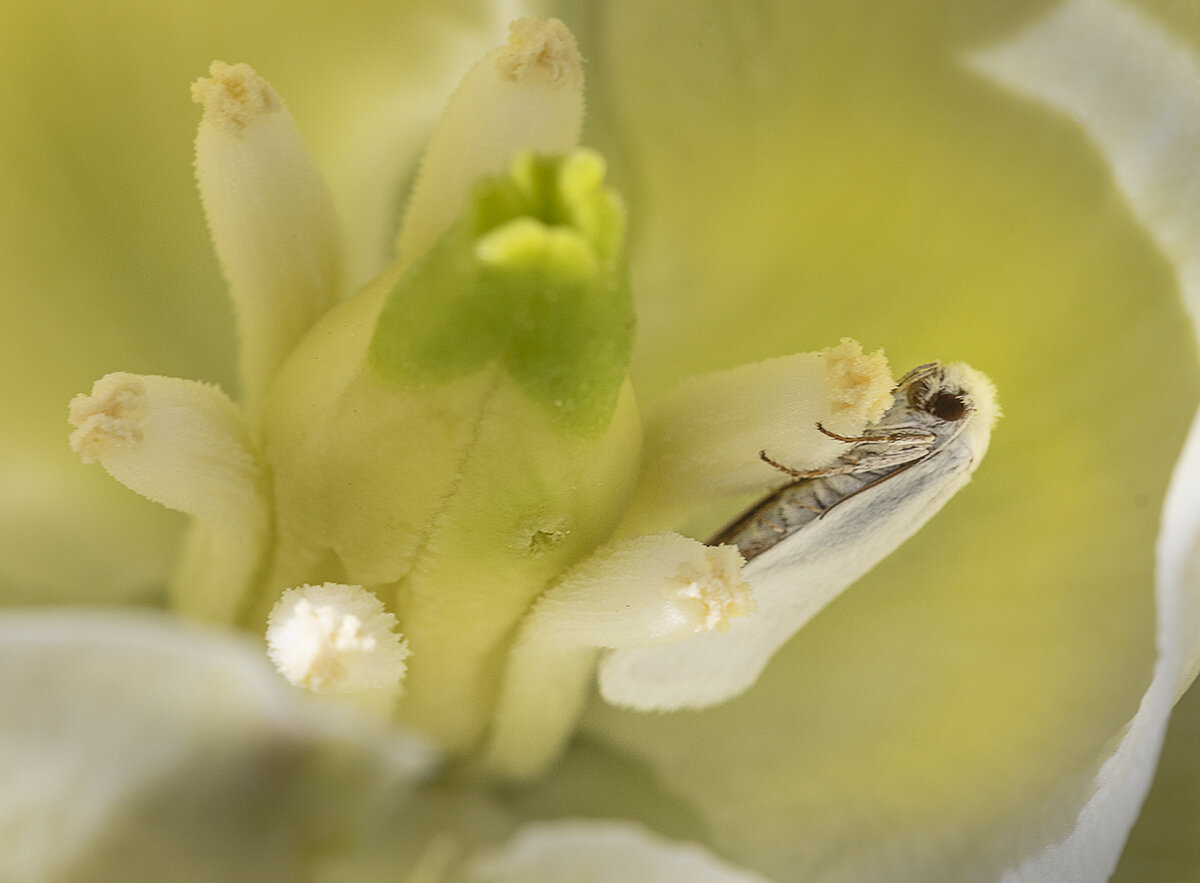The Value of Bugs
In April of 2020 I was scheduled to hang an exhibit of my insect photographs at the Park County Library in Cody, Wyoming. Also on the calendar was a one hour presentation at the library talking about why the world needs bugs for a healthy environment. Both events were cancelled due to restrictions of the pandemic. The exhibit was rescheduled for the month of November but the lecture had to be scrapped and so I downsized it significantly and turned it into a 12 minute podcast, meant to accompany this blog post, that will air on Sunday, November 22.
Three of the images hanging in place at the Park County Library for the month of November. Below each framed photo is a description of the insect along with a digital drawing depicting the actual size of the subject.
Some of the data:
Scientists have found evidence of insects existing on this planet about 300 million years ago. That is approximately 299,800,000 years longer than modern man. The first insects were thought to be distant relatives of present day dragonflies.
More than half of all species on earth are insects.
There are somewhere between 2 million and 30 million species of insects. We don’t know for sure because less than 1 million species have been formally identified.
There are about 10 quadrillion (10 followed by 18 zeros) individual insects in the world. That is about 1.4 billion insects for each human on the planet.
We are losing insects on a global scale at a rate that could mean a total loss within a century.
The reason these numbers are important to understand is because while insects can survive quite nicely without humans (after all, they did so for millions of years!), humans cannot survive without bugs.
One of the roles of insects that makes them critical for human survival is pollination.
A bee approaches a flower in search of pollen even though its “saddle bags” are already laden.
More than one third of all food crops depend on insects for pollination. While honey bees receive much of the credit for getting the job done, there are many more pollinators in the form of native bees, wasps, butterflies, moths, flies, beetles, ants and so on and so on.
While many insects are capable of pollinating multiple species of plants, some insects and plants have evolved to be completely dependent on each other. Around here, the best example is probably the yucca glauca plant and the yucca moth.
My front yard full of blooming yucca glauca plants in late June.
Adult female yucca moths scrape pollen from the anthers of yucca flowers. They then fly to other plants and deposit some of the pollen onto the stigma of those flowers. In return for this service the yucca plant will tolerate the moth laying eggs in a few of the flower ovaries.
A yucca moth hard at work scraping yucca pollen from the anthers of the flower.
Once the eggs hatch, the larva are able to consume the plant matter from those flowers while leaving the bulk of the plant to thrive. It is a delicate balancing act that has been perfected over many centuries, allowing both species to continue but also ensuring that if one of the species were to fail, the other would be unable to survive.
Another critical role insects play is that of decomposer. Humans have struggled since the beginning of societies to figure out how to handle waste of all kinds but in the natural world, insects do much of the dirty work.
Dung beetles on bison poop
A termite pauses on a stone
A burying beetle, one of the carrion beetles, works a mouse carcass
Termites get a bad rap but they, along with several types of beetles, are experts at breaking down the components of dead wood and plant material and turning them into usable soil nutrients.
Dung beetles are absolutely essential for pasture health. Without their ability to break up and consume animal waste, nothing would be able to grow under the layers of poop.
Carrion beetles have many fascinating habits, including the ability to smell dead flesh from several miles away. Burying beetles will work to quickly bury small animals in the soil before laying eggs in the carcass, providing a ready source of food for their growing offspring.
Despite the misconception of many, less than 3% of insects are considered pests. Unfortunately one of the bugs in that group is the deadliest animal in the world – the mosquito. An important role of many insects is as a predator of pests.
Close up of a dragonfly
Dragonflies are brilliant fliers, able to move quickly in any direction, even backwards. Add in their incredible eyesight and they rise to the top as mosquito devouring machines. One dragonfly is able to consume hundreds of mosquitos in a single day.
Insects serve as a source of food not only for other insects but also for birds, fish, reptiles and even mammals, including humans. North America lags behind much of the world as more than 80% of the nations on the planet regularly consume bugs as part of their diet. Obtaining protein from bugs is more environmentally friendly than growing the same amount of nutrients in cattle.
The biggest concern I have around a declining insect population is what we are missing out on. There is so much we have yet to understand. Cockroaches are being used in Search and Rescue operations. Antimicrobial compounds have been identified in black soldier fly larva. What if the next great cure for disease is waiting inside some species of insect and we kill it off before we even know it exists?
To learn more about this topic, be sure to listen to my podcast by clicking the button below, or by downloading the latest episode from Apple Podcasts or Spotify.








